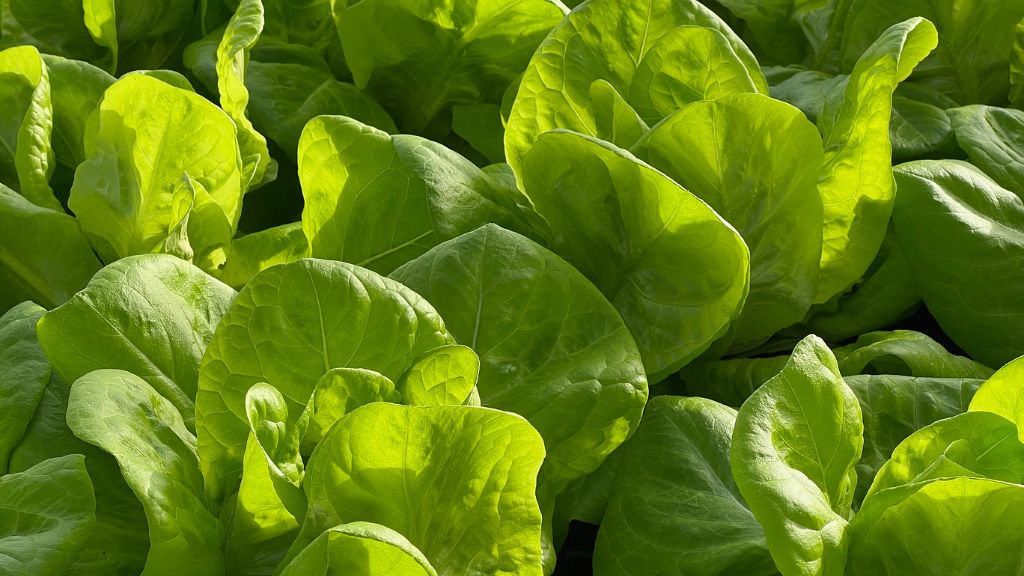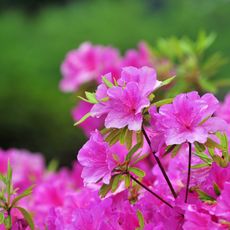Top 10 Questions About Lettuce


Even experienced gardeners have questions from time to time. Here at Gardening Know How we get lots of questions and we like to give our readers the information they need. Some questions seem to be asked more than others. Here are the 10 most commonly asked questions about lettuce plants. If your lettuce question is here, so is an answer to your question, as well as links to give you even more information.
1. My lettuce is bitter. What am I doing wrong?
The most likely cause of this problem is bolting. Has your lettuce been in the ground awhile and started to grow up rather than out? It may be bolting, that is, producing seeds. At this time lettuce leaves start taking on a bitter taste and it's time to replant. If this is not the case, take a look at what type of lettuce is growing in your garden. Some types of lettuce are sweet naturally, but some can be bitter. If you have the sweet type, be sure you are giving it adequate irrigation - lettuce does not like to do without when it's growing. Too much hot sun can also cause lettuce to taste bitter.
2. How many types of lettuce are there?
If you start listing off all the individual varieties of lettuce available in commerce, you'll get well into the hundreds. But all of them fall into five or six main categories: butterhead, Chinese lettuce (stem lettuce), crisphead (which includes iceberg), looseleaf, romaine, and summer crisp. The summer crisp group is not always named, but we consider it a category of its own.
3. Can lettuce be grown upside down like tomatoes?
Growing plants upside down (also called inverted) allows you to grow in smaller spaces and keeps plants out of the reach of soil pests, like cutworms. But it's even more important to provide inverted gardens with proper nutrition and irrigation. If you want to include lettuce in your upside-down garden, place it in the topmost portion of the hanging plant.
Gardening tips, videos, info and more delivered right to your inbox!
Sign up for the Gardening Know How newsletter today and receive a free copy of our e-book "How to Grow Delicious Tomatoes".
4. Why is my lettuce blooming? Should I pull them up?
It is easy to forget that your garden veggies are plants, just like geraniums and poppies. Left to their own devices, they flower and produce seeds to propagate the species. This is called "bolting" and is often triggered by abundant sunshine. Unfortunately for the gardener, when lettuce bolts, it turns its energy to seed production and the taste of the leaves gets bitter. While it won't kill you, they just don't taste good and many gardeners choose to pull them out and replant.
5. How can get or grow lettuce seeds?
You can purchase lettuce seeds in any garden store and in many hardware and grocery stores too. If you love the type of lettuce currently growing in the garden, allow one head to bolt and collect the seeds. Lettuce is a cool-season crop, so you can direct seed into the garden as soon as the soil can be worked in the spring or in early autumn.
6. Why are lettuce seedlings so thin?
When you start lettuce seeds indoors, they may not get the kind of light they need to grow strong. You'll see results if you move the seedlings to a window that gets more light, like a south-facing window. Another trick to get spindly seedlings to grow thicker is to lightly brush your fingers over them a few times a day. Alternatively, place an oscillating fan nearby to blow gently on them for a few hours every day.
7. How can I make lettuce produce heads?
The best way to help lettuce heads form is to plant them at the correct time. Remember, lettuce is a cool-weather crop which means that lettuce heads form best when the weather is cooler. Any unusually warm weather delays head formation, and if it lasts too long, it may prevent it entirely. If this appears to be happening, cool off the lettuce roots with mulch and regular irrigation, or shade the area with an opaque piece of cloth.
8. What's the best way to store lettuce?
Eating dirty lettuce can make you sick, but so can eating lettuce that has been improperly stored in a way that allows bacteria to develop. Your best bet is to wash lettuce before placing it in the refrigerator. Clean off all of the visible dirt by rinsing the leaves under running water and rubbing them clean with your hands. Alternatively, you can put the lettuce in a bowl of water to soak, swishing the leaves around to release the sand and dirt. Dry the lettuce completely before storing it in an air-proof container.
9. What is eating my lettuce leaves and how to control?
Lots of different pests like to munch on lettuce as much as you do. A few common lettuce pests are aphids, flea beetles, garden symphylans, grasshoppers, leaf miners, nematodes, snails and slugs, thrips, weevils and whiteflies. While there are specific ways that work best or getting rid of some of these pests, nontoxic neem oil insecticide works well as a systemic when applied as a soil drench. The oil is absorbed by the plant and distributed throughout the tissue where insects consume it when they are feeding. It can manage over 200 other species of chewing or sucking insects.
10. When to harvest lettuce plants?
Timing is important when it comes to harvesting lettuce, but when to pick depends on what type of lettuce you are growing. Head lettuce is ready to pick when the head becomes firm, and the entire head is harvested at the same time. Leaf lettuce can be harvested leaf by leaf, so it is ready whenever the external leaves are large enough to use. Varieties will differ on how long they take to mature, but since lettuce is a cool season crop, you'll want to harvest all lettuce before the heat of summer hits.
We all have questions now and then, whether long-time gardeners or those just starting out. So if you have a gardening question, get a gardening answer. We're always here to help.

Teo Spengler is a master gardener and a docent at the San Francisco Botanical Garden, where she hosts public tours. She has studied horticulture and written about nature, trees, plants, and gardening for more than two decades. Her extended family includes some 30 houseplants and hundreds of outdoor plants, including 250 trees, which are her main passion. Spengler currently splits her life between San Francisco and the French Basque Country, though she was raised in Alaska, giving her experience of gardening in a range of climates.
-
 Ideal Azalea Water Requirements – For Lush, Healthy Shrubs That Will Thrive For Years
Ideal Azalea Water Requirements – For Lush, Healthy Shrubs That Will Thrive For YearsWhat are an azalea's water requirements? Learn how to keep these beautiful spring-blooming shrubs happy and healthy in your yard or container garden.
By Amy Grant
-
 7 Vegetables To Plant In April: Start Indoors Or Outside For A Bumper Summer Harvest
7 Vegetables To Plant In April: Start Indoors Or Outside For A Bumper Summer HarvestAchieve your growing ambitions with these best vegetables to plant in April – including cold-hardy crops to sow direct and tender varieties to start indoors
By Mary Ellen Ellis